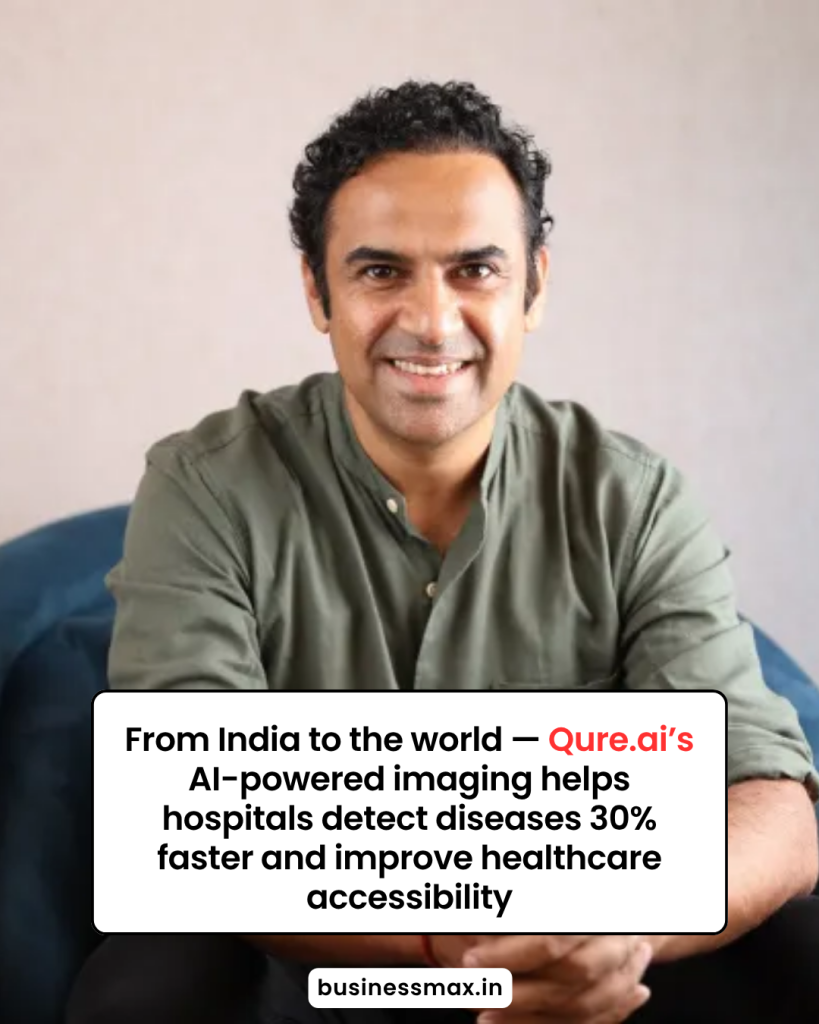How Prashant Warier’s Qure.ai Is Revolutionizing Global Healthcare — Using AI-Powered Medical Imaging to Detect Diseases 30% Faster Across 1,000+ Hospitals Worldwide
In a world where access to radiologists and diagnostic experts remains uneven, Qure.ai, founded by Prashant Warier and Pooja Rao in 2016, has emerged as a pioneer in AI-driven medical imaging. Headquartered in Mumbai, the company leverages artificial intelligence to interpret X-rays, CT scans, and MRIs within seconds—helping doctors detect diseases up to 30% faster.
Qure.ai’s mission is simple yet powerful: make healthcare diagnostics faster, accessible, and more accurate. Using advanced deep learning algorithms, the platform identifies conditions such as tuberculosis, stroke, lung abnormalities, brain injuries, and fractures with high precision.
By 2025, Qure.ai’s AI solutions are deployed across 1,000+ hospitals and diagnostic centers in 70+ countries, from India to Africa and Europe. With an annual revenue of $20 million and over $50 million in funding from investors like Sequoia Capital and MassMutual Ventures, Qure.ai is recognized as one of India’s most impactful HealthTech startups.
At the heart of its innovation lies qXR and qER, two flagship AI platforms.
- qXR analyzes chest X-rays for signs of tuberculosis, pneumonia, and lung nodules — transforming public health screening in developing regions.
- qER focuses on brain CT scans, detecting trauma, hemorrhages, and strokes in under two minutes — often before human review.
These tools empower overworked radiologists and general practitioners, particularly in countries facing doctor shortages. For instance, in India, where only one radiologist serves nearly 100,000 people, Qure.ai’s algorithms help bridge the gap between diagnostic demand and available expertise.
Qure.ai’s technology is FDA-approved and CE-certified, reflecting its compliance with international medical standards. Its products integrate seamlessly with hospital systems, offering AI triage, report generation, and cloud-based analytics that improve both speed and consistency.
Founder and CEO Prashant Warier, a data scientist turned entrepreneur, believes that the future of healthcare lies in AI-assisted decision-making.
“AI won’t replace doctors—it will empower them. With Qure.ai, we aim to make quality diagnostics available to every patient, anywhere,” he says.
Beyond hospitals, Qure.ai’s solutions have been deployed by governments and NGOs for community health programs. Its tuberculosis screening model, for instance, supports WHO initiatives by accelerating disease detection in low-resource regions.
During the COVID-19 pandemic, Qure.ai’s AI models played a critical role in analyzing lung scans to detect infections early and monitor disease progression, assisting both clinicians and public health authorities.
The startup’s impact extends beyond healthcare efficiency—it represents how AI innovation from India is addressing global medical challenges. Qure.ai’s systems now process over 2 million scans per month, helping hospitals cut diagnostic turnaround time by up to 60%.
As healthcare systems worldwide move toward digital transformation, Qure.ai stands at the intersection of AI, medicine, and accessibility. Its model—using advanced algorithms to support human expertise—is now shaping how modern diagnostics are performed.
With a focus on affordable AI, ethical deployment, and clinical validation, Qure.ai continues to prove that technology can save lives at scale. From rural India to urban Europe, its software is redefining how the world looks at radiology.
Lesson: When AI meets healthcare, speed and accuracy become universal. Qure.ai shows that intelligent diagnostics can bridge the gap between technology and human care.

Last Updated on: Monday, October 27, 2025 7:43 pm by Business Max Team | Published by: Business Max Team on Monday, October 27, 2025 7:43 pm | News Categories: Startup